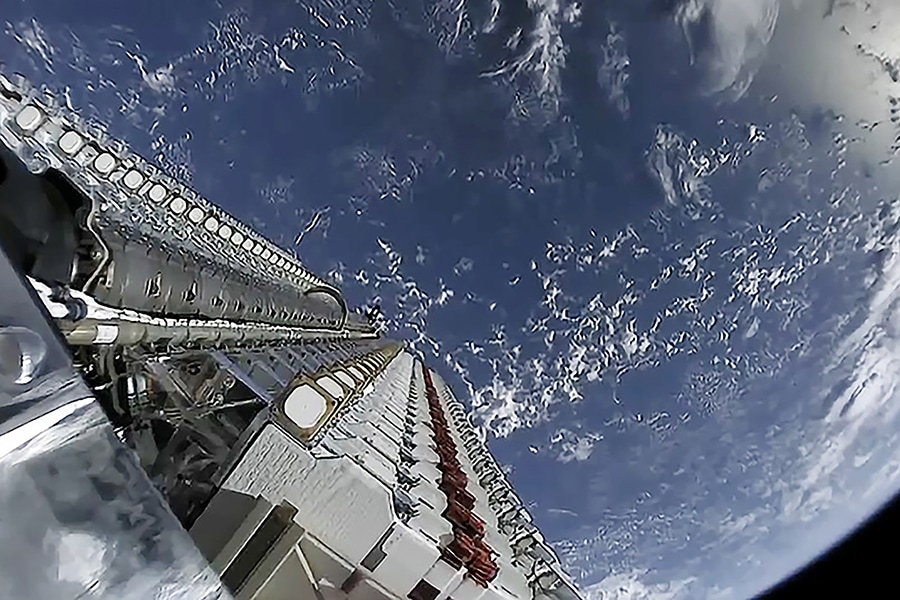
SpaceX launches 60 additional Starlink satellites for global internet
The private rocket company founded by Elon Musk launched one of its reusable rockets from Cape Canaveral on Monday, to beam internet services around the world. But astronomers worry about the light pollution it is causing
 A photo provided by SpaceX shows a view of SpaceX’s Starlink’s satellites just before being deployed on May 24, 2019. Various companies are pressing ahead with plans for internet service from space, which has prompted astronomers to voice concerns about the impact on research from telescopes on Earth
A photo provided by SpaceX shows a view of SpaceX’s Starlink’s satellites just before being deployed on May 24, 2019. Various companies are pressing ahead with plans for internet service from space, which has prompted astronomers to voice concerns about the impact on research from telescopes on EarthImage: SpaceX via The New York Times
On Monday morning, SpaceX launched one of its reusable rockets from Cape Canaveral, Florida, carrying 60 satellites into space at once. It was the second payload of Starlink, its planned constellation of tens of thousands of orbiting transmitters to beam internet service across the globe.
When SpaceX, the private rocket company founded by Elon Musk, launched the first batch of Starlink orbiters in May, many astronomers were surprised to see that the satellites were extremely bright, causing them to fear that the constellation would wreak havoc on scientific research and transform our view of the stars. Since then, many scientists have been on a mission to better quantify the impacts of Starlink and to share their concerns with SpaceX.
In response, SpaceX has said that it wants to mitigate the potential impacts of Starlink. But at the same time, the company is still moving full steam ahead.
In October, Musk announced that he was using Twitter via a Starlink internet connection, as his company was requesting permission from the Federal Communications Commission to operate as many as 30,000 satellites on top of the 12,000 already approved. Should SpaceX succeed in sending this many satellites to low Earth orbit, its constellation would contain more than eight times as many satellites as the total number currently in orbit.
That move added to the worries of many astronomers.
When James Lowenthal, an astronomer at Smith College, first saw the train of Starlink satellites marching like false stars across the night sky in the spring, he knew something had shifted.
©2019 New York Times News Service




